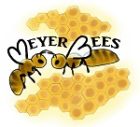Beekeeping is a delicate balance of nature and nurture — and at the heart of every successful hive lies one key figure: the queen bee. Whether you are a seasoned beekeeper or just a beginner, the quality and condition of your queen can determine the productivity, temperament, and long-term health of your entire colony. That’s why so many beekeepers search specifically for mated queen bees for sale — queens that are not only fertile but proven to sustain strong hives.
In this guide, we’ll explore what makes mated honey queen bees so essential, how they differ from virgin queens, and what factors to consider when adding one to your apiary.
What Are Mated Queen Bees?
A mated queen bee is one that has completed her mating flights and successfully stored enough sperm to lay fertilized eggs throughout her lifespan. This process usually takes place a few days after the queen emerges from her cell. Once mated, she begins laying eggs that will develop into worker bees — the backbone of any thriving colony.
In contrast, a virgin queen has not yet mated. While virgin queens can still lead a hive, they come with a level of uncertainty — their ability to mate successfully depends on weather conditions, drone availability, and timing. That’s why most beekeepers prefer to introduce mated honey bee queens, which offer immediate stability and reliable brood patterns.
Why Choose Mated Queen Bees for Your Hive?
The queen’s role extends beyond reproduction. She influences everything from colony behavior to honey production. Here’s why purchasing mated queen bees can make all the difference:
- Immediate Egg Laying – Mated queens begin laying eggs almost right after introduction, helping colonies grow rapidly during the productive season.
- Predictable Genetics – Reputable breeders select queens for desirable traits like gentleness, honey production, disease resistance, and overwintering ability.
- Stable Colony Dynamics – A strong, mated queen reduces stress in the hive, promoting harmony among worker bees.
- Improved Brood Patterns – Mated queens lay eggs in a consistent, solid pattern — a sign of a strong and healthy colony.
- Reduced Risk of Failure – Since the queen has already proven her fertility, the risk of a failed colony start is significantly lower compared to introducing an unmated queen.
How Mated Queens Are Bred
Queen breeding is a careful process that involves selecting the best genetics from healthy, thriving colonies. Beekeepers isolate chosen larvae and transfer them into queen cups, where they are raised in queenless hives until they emerge as virgin queens. These queens are then allowed to mate naturally with multiple drones, ensuring a diverse and robust genetic pool.
Once mating is complete, the queens are evaluated for laying performance before being made available as mated honey bee queens for sale. This ensures that every queen is fertile, active, and ready to lead a colony effectively.
Tips for Introducing a Mated Queen Bee to a New Colony
A proper introduction is key to a queen’s acceptance. Follow these best practices:
- Wait before introducing: If the hive recently lost its queen, give it 24–48 hours before adding the new one.
- Use a queen cage: This allows worker bees to become familiar with her pheromones gradually.
- Avoid direct contact too soon: Patience ensures a smooth transition and minimizes rejection risk.
- Monitor early activity: Within a few days, you should see a clear laying pattern — a sign that your new queen has been accepted successfully.
Sustainability and Bee Health
Selecting a high-quality mated honey bee queen isn’t just about honey yield — it’s about building a sustainable and resilient bee population. With increasing threats from pests, diseases, and habitat loss, choosing strong genetics helps protect bee populations and ensures pollination for countless crops and plants.
By prioritizing healthy queens, beekeepers contribute to the broader goal of preserving pollinator ecosystems and maintaining biodiversity.
Final Thoughts
Every healthy hive begins with a strong queen. Whether you’re expanding your apiary, improving colony genetics, or recovering from queen loss, choosing mated queen bees for sale ensures that your colony thrives from day one. By understanding the role, breeding process, and care of these queens, you can set the foundation for a productive and sustainable beekeeping journey.
FAQs
1. What does “mated” mean in a queen bee?
A mated queen has successfully mated with drones and can lay fertilized eggs, producing worker bees essential for colony growth.
2. How long does a mated queen bee live?
On average, a mated queen can live 2–3 years, though her peak productivity typically lasts for about two seasons.
3. Can I replace an old queen with a new mated queen?
Yes. Requeening with a mated queen helps maintain productivity, calm behavior, and genetic strength in the hive.
4. How can I tell if my queen bee is mated?
A mated queen will lay eggs in consistent, even patterns, and you’ll notice developing larvae and capped brood in the frames.
5. When is the best time to introduce a mated queen?
Spring and early summer are ideal since colonies are actively growing and receptive to new queens.
